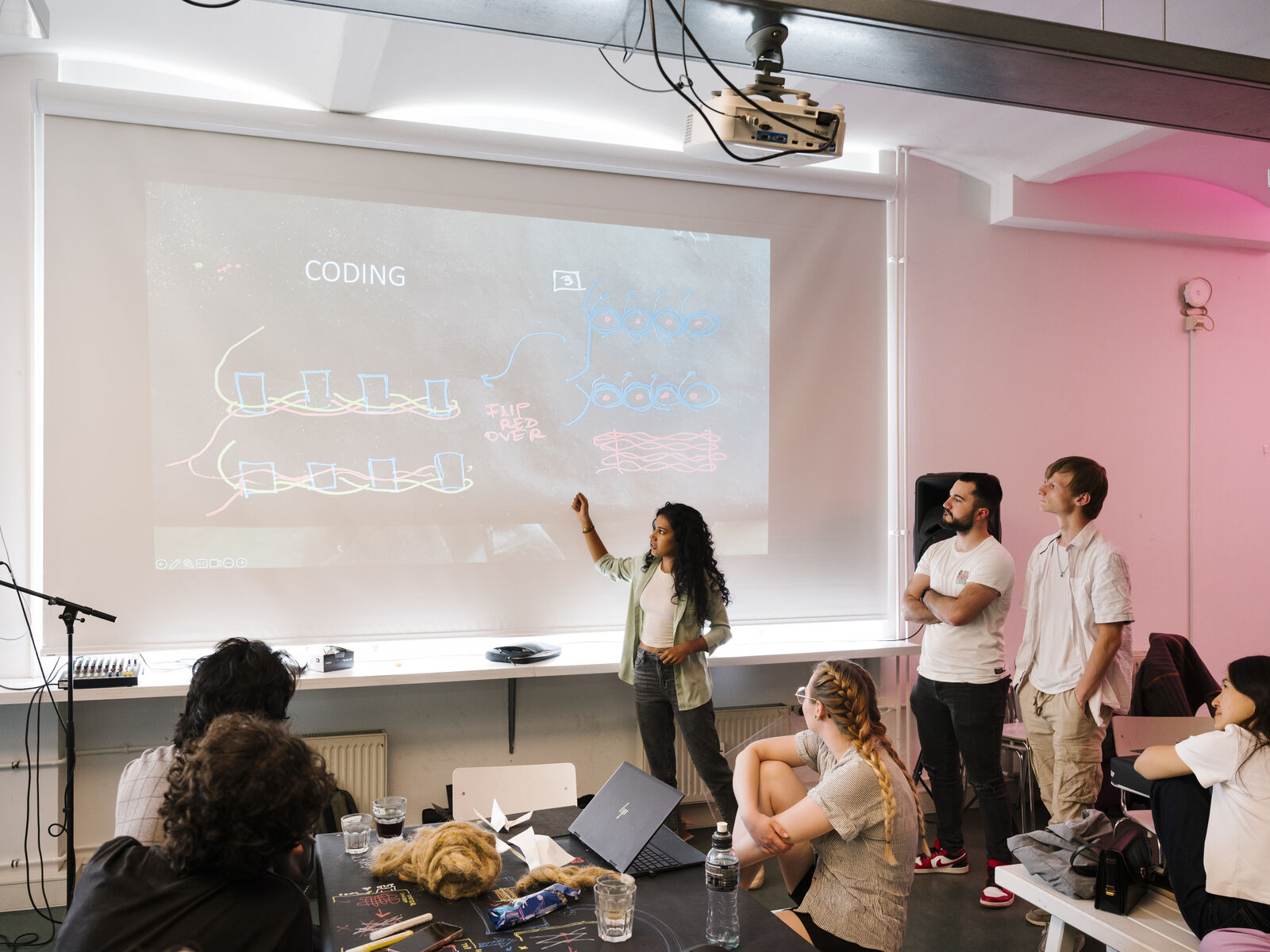Textile Gestures - Mapping Tactile Practices with Architectural Yarns
Hand-on Workshop at Bauhaus Study Rooms
Performative dimensions of design, sensory cognition, and body knowledge were essential modules of Bauhaus theory. They are genuine to textile practices. In the context of this year’s thematic preoccupation of the Bauhaus Dessau Foundation with the human body, the Bauhaus Study Rooms 2023 focused on the topic of performativity as an integral component of design processes and design activities. Design is viewed as a reciprocal process and a corporeal activity. In different formats and learning environments, the event explored the extent to which performative methods contribute to new design approaches. Emphasis has been put on practices that develop design as a field embracing the heterogeneous potentials of a socially inclusive and environmentally just cultural practice.
Tacit knowledge refers to the visual, aesthetic, haptic, performative, motor and gestural activity in and on which knowledge in design is to be expressed in a non-verbal manner. Debates about practice-based design research have been accompanied by their own epistemological semantics. Familiar terms include ›design knowledge‹ and ›designerly ways of knowing‹, ›design thinking‹, ›sensory knowledge‹ and ›experiential knowledge‹.
To incorporate these forms of knowledge into design, designers can engage in hands-on experimentation and prototyping, actively exploring the properties and behaviors of materials through manual interaction.
In the one-day workshop, a group of 45 international students from Bauhaus Dessau Foundation, Coop Designresearch of Hochschule Anhalt explored, verbalized, and mapped tactile practices and textile gestures with large-scale yarns made from natural fibers. Through the investigation of reconfigurable textile techniques using yarn samples, insights have been gained into collective design and construction procedures of fiber-based materials such as of ›Architectural Yarns‹.
Through an ongoing process of mapping and documentation, students developed a diverse range of visual tools, including photographs and videos, stop-motion sequences, film stills, and superimposed collages to capture and communicate the intricate dynamics of the tangling process.
Acknowledgement
The two-day mini-festival »Bauhaus Study Rooms« was conducted by the Bauhaus Dessau Foundation in cooperation with the Anhalt University of Applied Sciences and the Cluster of Excellence »Matters of Activity« at Humboldt-Universität zu Berlin. Photos: Thomas Meyer
Contributing Members are Laurence Douny with a Guided Tour through the Exhibition »DAOULA | sheen: West African Wild Silk on its Way«, Maxie Schneider and Maja Avnat with the Hands-On Workshop »Textile Gestures: Mapping Tactile Practices with Architectural Yarns«, and Patricia Ribault with a Keynote Lecture entitled »Between Thinking and Making: On Performative Design«.


